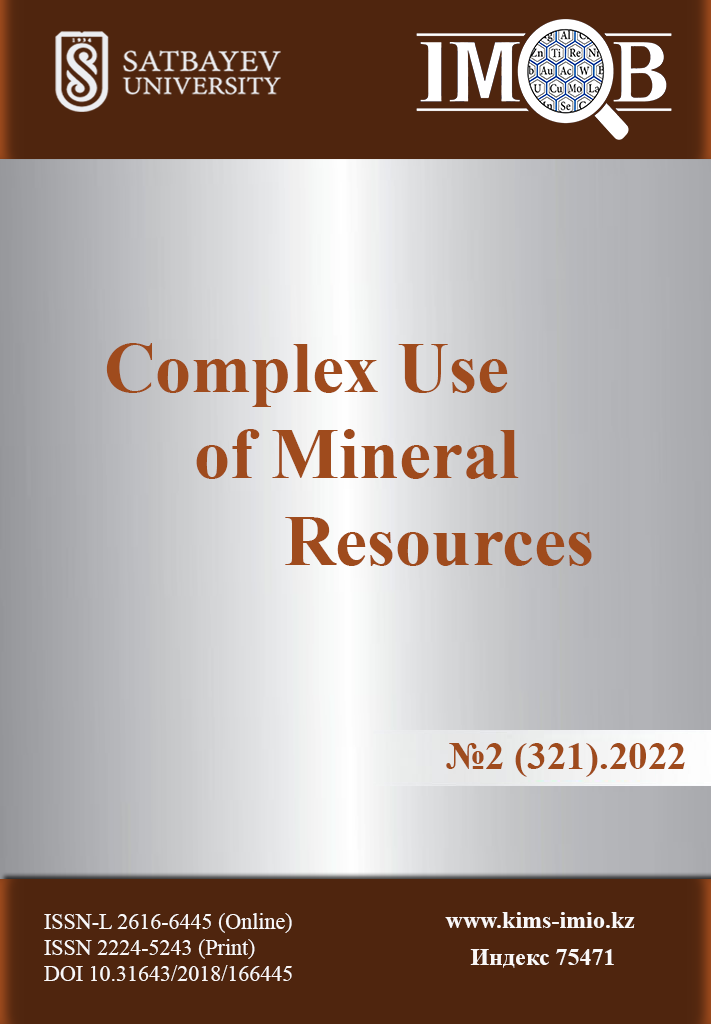On the applicability of hardening mechanisms to low-carbon and low-alloy steels
DOI:
https://doi.org/10.31643/2022/6445.17Keywords:
hardening mechanisms, yield stress, thermomechanical treatment, accelerated cooling, dislocation density, phase componentsAbstract
On the basis of experimental studies, the approximate contribution of various hardening mechanisms to the yield point of low-carbon and low-alloy steels is estimated. It has been established that for hot-rolled steels (St.3sp and St5ps), solid-solution and grain-boundary hardening (54.0% and 29.0, %) make the greatest contribution to the yield point. The predominant strengthening mechanism of low-alloy steel 10HNDP is solid solution, a high proportion of which in this steel is explained by the resistance to moving dislocations from the side of dissolved atoms of Ni, Cu, P, and Cr in α-Fe. In low-alloy steel 16G2AF, along with these hardening components, the role of precipitation hardening is noticeable (20.0%). It is shown that thermomechanical treatment of steel grade St.5ps leads to an increase in the value of dislocation hardening up to 27.0% due to an increase in the density of dislocations and the retention of most of the dislocations in the rolled stock during accelerated cooling of hot-deformed austenite. It is noted that solid solution hardening with alloying with cheap alloying elements (Mn, Si), as well as dislocation and dispersion hardening through the use of thermomechanical treatment in combination with the addition of carbide and nitride-forming elements V (C, N).
Downloads
References
Pikering FB. Fizicheskoe metallovedenie I razrabotka stalei [Physicalmetallurgy and steel development]. Moscow: Metallurgiya. 1992;83.(in Russ.).
Tylckin MA, Bolshakov V., Odesscky PD. Strycture and Properties of Building Steel. Moscow: Metallurgiya. 1993;286.
Tushinskiy LI, Mochalina NS, Plokhov AV, Kuzmin NG. Svoistva stali posle reguliruemogo termoplasticheskogo uprochneniya pri formirovanii struktury na makro-, mexo-I nanourovnyakh [Properties of steel after controlled thermoplastic hardening during structure formation at macro-, meso-and nanolevels]. Izvestiya vysshikh uchebnykh zavedeniy. Chernaya metallurgiya = Proceedingsof higher educational institutions. Ferrous metallurgy. 2010;4:37-40.(in Russ.).
Kanayev АТ. Povyshenie kachestva sortovogo prokata sovmesshennoi deformatsionno –termicheskoi obrabotkoi[Improving the quality of long products by combined degormation –heat treatment]. Astana: Izdatelstvo Arman-TV. 2009;180. (in Russ.).
Khirsh P. Raspredelenie dislokatsiy I mekhanizm uprochneniya metallov[Distribution of dislokations and the mechanism of hardening of metals].Moscow: Metallurgiya. 1987;194. (in Russ.).
Tushinskiy L.I. Problemy sovremennogo materialovedeniya XXI veka[Problems of modern materials science of the XXI centery]. Fundamentalnye I prikladnye problem chernoi metallurgii. Sbornik nauchnykh trudov = Fundamental and applied problems of ferrous metallurgy. Collection of scientific papers. 2004;7:23-49.(in Russ.).
Sidorenko OG, Fedorova IP, Sukhiv AP et al.Formirovanie struktury armaturnogo prokata, termicheski uprochnennogo sposobom prervannoi I preryvistoi zakalki [Formation of the structure of reinforcing bars, thermally hardened by interrupted and intermittent hardening]. Stal = Steel. 2012;1:61-64.(in Russ.).
Goldshtein MI, Litvinov VS, Bronfin BМ. Metal-рhysika of high-strength allpys. Moscow: Metallurgiya. 1986;312.
Grachev SV, Goldshtein MI, Veksler UV. Spetsialnye stali (Special steels).Moscow: Metallurgiya. 1995;407.
Rybin VV. Formirovanie struktury I svoistv nizkouglerodistoy stali pri retmomekhanicheskoy obrabotke s uskorennym okhlazhdeniem [Formation of the structure and properties of low-carbon and low-alloy steel during thermomechanical processing with accelerated cooling]. Voprosy metallovedeniya = Metallurgy issues. 2007;4:329-340.(in Russ.).
Kamenetskaya DS, Piletskaya IB, Shiryayev VI. Zhelezo vysokoy stepeni chistoty[High purity iron]. Moscow: Metallurgiya.1988;248.(in Russ.).
Bolshakov VI, Starodubov KF, Tylkin MA.Termicheskaya obrabotka stali povyshennoy prochnosti[Heat treatment of high strength steel].Moscow: Metallurgiya. 1977;200. (in Russ.).
Tushinskiy LI. Strukturnaya teoriya konstruktivnoy prochnosti materialov [Struktural theory of structural strength of materials].Novosibirsk: NGTU.2004;400. (in Russ.).
Bernshtein ML, Zaimovskiy VA, Kaputkina LM. Termomekhanicheskaya obrabotka stali[Thermomechanical treatment of steel]. Moscow: Metallurgiya.1993;479. (in Russ.).
Panin VYe, Dudarev YeF, Bushnev LS. Struktura I mekhanicheskie svoistva tverdykh rastvorov zamesheniya[Strukture and mechanical properties ofsubstitutional solid solutions]. Moscow: Metallurgiya. 1991;206.(in Russ.).
Martin J. Mikromekhanizmy dispersionnogo tverdeniya splavov[Mikromechnisms of precipitation hardening of alloys]. Moscow:Metallurgiya. 1983;168.(in Russ.).
Kelli A, Niklson R. Dispersionnoe tverdenie[Dispersion hardening]. Moscow: Metallurgiya.1966;300. (in Russ.).
Blanter MYe. Teoriya termicheskoy obrabotki[Heat treatment theory].Moscow: Metallurgiya.1984;327. (in Russ.).
Novikov II. Teoriya termicheskoy obrabotki metallov[Theory of heat treatment of metals]. Мoscow: Metallurgiya. 1986;479. (in Russ.).
Kelli A. Vysokoprochnye materialy[High strength materials].Мoscow: Mir. 1976;262. (in Russ.).
Downloads
Published
How to Cite
Issue
Section
License
Copyright (c) 2022 Jaxymbetova, M., Kanayev, A., Akhmedyanov, A., & Kirgizbayeva, K.

This work is licensed under a Creative Commons Attribution-NonCommercial-NoDerivatives 3.0 Unported License.


























